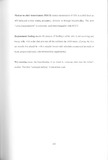| dc.description.abstract | Mother to child transmission (MTCT) accounts for 90% of HIV infections in children,
with one third occurring through breastfeeding. Breast milk transmission is markedly
higher in breastfeeding populations as is the case in Kenya, where breastfeeding is still
the most feasible, accessible and effective intervention for child survival. As part of
efforts to reduce transmission through breast milk, there has been a shift in policy
regarding breastfeeding. Mothers aware of this are likely to seek alternative ways of
infant feeding in cases where babies are born to HIV -infected mothers. It was therefore,
the aim of this study to assess the knowledge of mothers/caregivers about HIV /AIDS
and Mother-to-child transmission (MTCT) of HIV and the alternative infant feeding
practices that could be adopted by HIV -positive mothers or orphans as replacement to
breastfeeding.
A cross-sectional survey was conducted during the months of September-October 2000
in Siaya District. The specific objectives were:
1. To determine the level of awareness about HIV/AIDS and its transmission through
breast milk.
2. To determine infant feeding practices in the community.
3. To determine attitude towards specific recommended infant feeding practices.
Two divisions, Karemo and Boro, in Siaya district were covered during the study. A
total of 188 mothers or caregivers of children below six months participated in the study
and responded to the main questionnaire. Consecutive sampling method was used for
the main questionnaire with all households with an infant below 6 months included in
the study due to their low numbers. Focus group discussions, key-informant and indepth
interviews were also used to enrich quantitative data collected using the main
study instrument.
Results show that there is a high level of awareness about HIV/AIDS, MTCT and
particularly transmission through breast milk. Unfortunately, about 15% of mothers did
not know that a mother could transmit HIV to her baby. Most respondents also did not
see delivery time as a possible cause of transmission. There were also a few
misconceptions where respondents, especially those with little education, had incorrect
information on transmission methods.
There were some positive feeding practices with almost all (98.9%) the infants still on
breast milk. A few mothers initiated breastfeeding within the first hour (21.7%) while a
handful (2.6%) were exclusively breastfeeding their babies. On the other hand, negative
practices such as mixed feeding and poor choice of alternative feeds were also noted.
There is widespread mixed feeding, from as early as the second week of life in some
cases, a factor that increases chances of HIV transmission through breastfeeding.
Cow's milk was the most popular as a breast milk alternative and is readily available in
the community although there is need to increase its availability at the household level
and also improve on its preparation to make it nutritionally adequate and safe. Surrogate
nursing and the use of other breast milk alternatives were not acceptable to most
respondents for fear of cross infection due to unknown status of both baby and wet
nurse.
From these findings we can conclude that the level of awareness about HIV IAIDS and
MTCT is very high, but details are required for better understanding, and to enable
mothers make informed and appropriate choices if there is need. Mixed feeding is the
main practice as opposed to the recommended exclusive breastfeeding in the first six
months of life. There is need for widespread counselling about HIV/AIDS and MTCT
as well as on infant feeding practices. Therefore, it is recommended that:
I. Mothers and their partners should be targeted with relevant information on
HIV/AIDS, MTCT and infant feeding.
2. Voluntary counselling and testing services should be provided at the community
level for mothers and their partners to enable them know their status in order to
make informed choices.
3. Training and refresher courses are necessary for traditional birth attendants (TBAs)
and community health workers (CHWs) by health workers to create awareness
among the TBAs and CHWs and using them to disseminate information.
4. Counselling be provided on infant feeding, highlighting advantages of exclusive
breastfeeding as well as the risks associated with mixed feeding, breastfeeding and
replacement feeding in the context of HIV IAIDS.
5. Men be sensitised about their role in HIV and infant feeding practices and decision
making. This will help reduce the fear of stigmatisation.
6. Education on the proper use, suitability and preparation of alternative feeds that
have potential such as cow's milk, goat milk and soya should be given. Production
and distribution of milk should be improved to increase availability at the household
level. | en |

